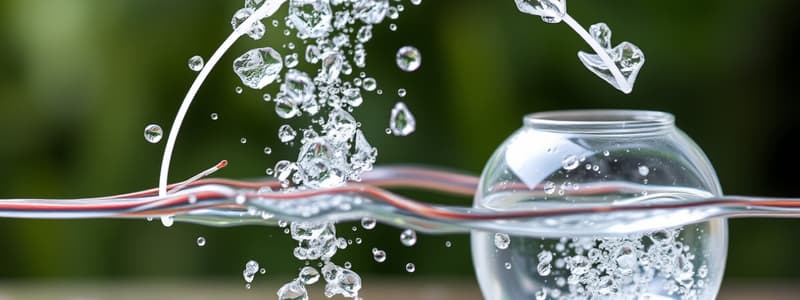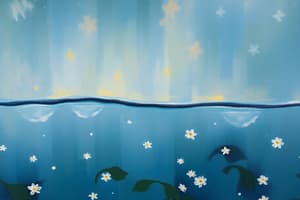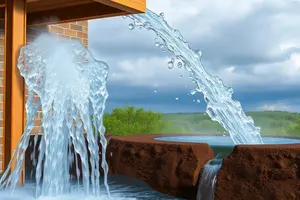Podcast
Questions and Answers
What is the water cycle?
What is the water cycle?
The way that water moves from being water to vapor and then back to water
What is evaporation?
What is evaporation?
When the sun heats up water in rivers, lakes, or the ocean and turns it into vapor or steam
What happens during condensation?
What happens during condensation?
Water vapor in the air gets cold and changes back into liquid, forming clouds
What is precipitation?
What is precipitation?
What is runoff?
What is runoff?
What causes evaporation?
What causes evaporation?
What are tributaries?
What are tributaries?
What role does the sun play in the water cycle?
What role does the sun play in the water cycle?
What is the water table?
What is the water table?
Flashcards are hidden until you start studying
Study Notes
Water Cycle Overview
- The water cycle describes the continuous movement of water between its liquid and vapor states, returning to liquid form.
Evaporation
- Evaporation occurs when sunlight heats water from sources like rivers, lakes, or oceans, converting it into vapor or steam.
- This process is essential for initiating the water cycle.
Condensation
- Condensation happens when water vapor cools and transforms back into liquid droplets, resulting in cloud formation.
Precipitation
- Precipitation occurs when water falls back to Earth in various forms, including rain, snow, sleet, or hail.
Runoff
- Runoff is the movement of water across the Earth’s surface after precipitation; it can either be absorbed by the soil or flow over the land.
Tributaries
- Tributaries are smaller streams or rivers that join larger bodies of water, transferring runoff and contributing to water flow.
Importance of the Sun
- The sun acts as a crucial energy source that drives the water cycle by providing heat necessary for evaporation.
Water Table
- The water table is the underground boundary where the ground becomes completely saturated with water, indicating the level of groundwater.
Studying That Suits You
Use AI to generate personalized quizzes and flashcards to suit your learning preferences.




